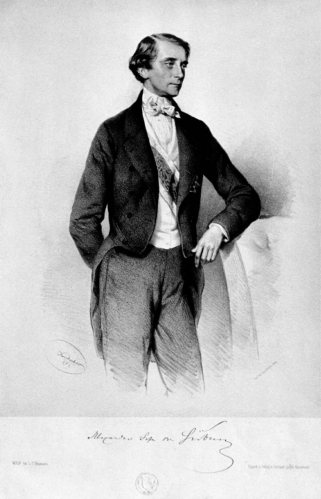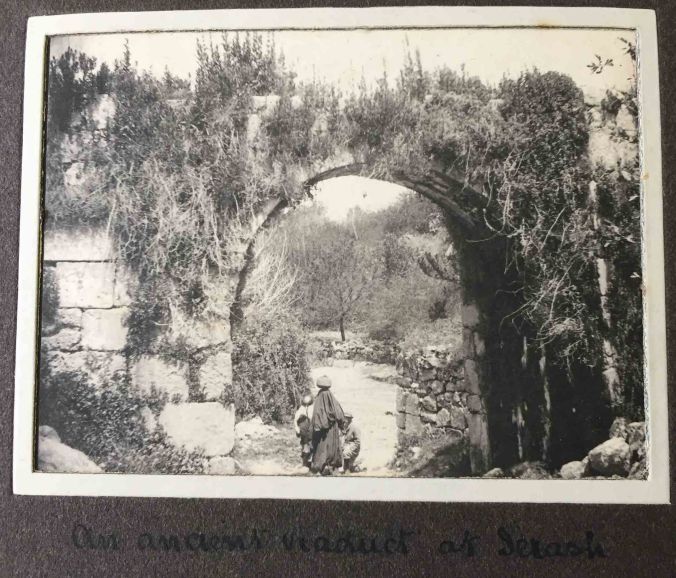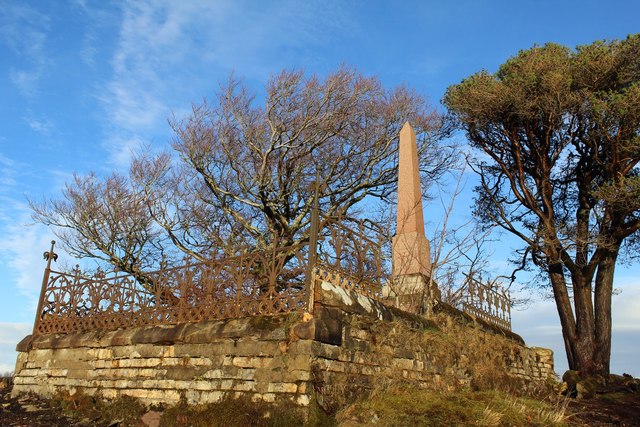Both from the list of Petra graffiti of Brünnow and von Domaszewski (1904: I, 192) and the list of travellers compiled by Norman Lewis, we already knew of several travellers to Petra for this year. Best-known are the American artist Frank Church, the British Marquis of Ely and his mother, Lady Ely, and a party of French artists centred on Gérôme and Lenoir. Although some of these parties were brought together in a larger group for the actual visit to Petra, there were at least five parties known to have visited Petra in 1868. We can now add two more and that they also visited part of the Decapolis soon after.
The starting point was the discovery by Travis Hearn of a delightful book of ‘Letters’ sent to family back in the United States by a young woman – ‘Miss Kate Kraft’, travelling with her sister, brother-in-law and another companion through Egypt and the Levant in 1868. She never crossed the Jordan or visited Petra but writing from Jerusalem on 8 April 1868 she mentions Lord and Lady Conyngham whom she had previously met in Egypt. The Conynghams she says had ‘just returned from Petra’. Lord Conyngham – younger son of the Irish peer, the 2nd Marquess Conyngham (pronounced Cunningham), and younger brother of the future 3rd Marquess, had indeed been to Petra. Armed with that knowledge, Travis discovered he had published an entire book about his travels based on his journal from the trip.
There was more. In reading Conyngham’s book it emerged that just a couple of days ahead of them en route to the ancient city as they travelled from Aqaba to Petra was someone they coyly called ‘Baron H—’ and described as a notable Austrian diplomat. Not particularly helpful for an empire thick in Barons and Counts, many of whom had multiple names. However, …. back to Kate Kraft who begins her account of her family visit to Philae on the Nile with a reference to the same Austrian diplomat but no hesitation in naming him as Baron Hubner. A little more research revealed him as Baron (later Count) Alexander Joseph von Hübner, one-time ambassador to several capitals but a man who set off in 1867, aged about 55 on a tour that was to take him around the world and last about 4 years. He subsequently published two books – each in two volumes, about parts of his ‘Ramble’ but not – sadly, about the part in the Middle East. As he was a keen journal-writer, the texts may survive in an archive somewhere. Perhaps in Ireland! His daughter married an Irishman, their son was a noted Irish politician and Hübner himself wrote the Preface to one of his books while in Tipperary!
There is more. In addition to adding these two new parties as visitors to Petra in 1868, the account by Lord Conyngham shows them joining with Hübner in Jerusalem and travelling together thereafter, including a trip across the R. Jordan to Salt, Jarash then through the Jabal Ajlun and back to Nablus again, c. 19-24 April 1868. This, too, was a journey ‘east of Jordan’ previously unknown. Though they were at Jarash just one night (it seems) Hübner is mentioned as ‘sketching’.

Alexander Graf Hübner, 1859 – (Commons, Public Domain)
It does not seem that Hübner had a companion(s) on his trip to Petra – but another Austrian Baron (Koller), making the same trip in 1840, managed not to mention that he had several companions. The Conyghams certainly had a companion – hidden in their text is a reference to him occupying their dining tent and elsewhere identifying him as an ‘English clergyman’, perhaps the Rev. Mr Wight referred to in Egypt.
And finally … Francis Conyngham died young – aged 47. He seems to be buried in a small family burial ground at Muirshiel, near Lochwinnoch in Refrewshire, Scotland. By then he had developed the burial ground as a memorial to his parents. As the photograph shows, the monument he chose seems to be a red granite obelisk, perhaps inspired by those he had seen in Egypt including when his Nile cruise took him past the Aswan quarries.
References:
Conyngham, F. (1869) Leaves from My Journal, Dublin (McGlashin and Gill)
Kraft, K. (1869) The Nilometer and the Sacred Soil: a Diary of a Tour Through Egypt, Palestine, and Syria, New York (Carleton)


